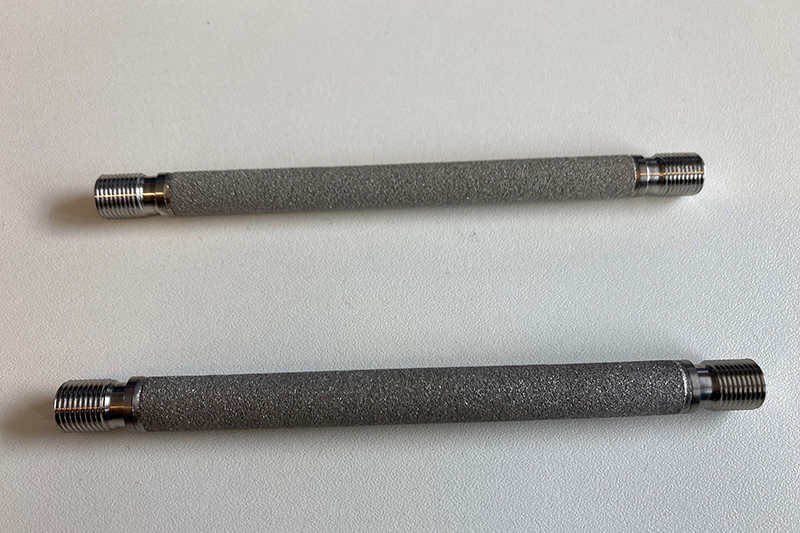Tubular electrolyser aids steam-based hydrogen production
A tubular cell that withstands high temperatures could cut costs for steam-based hydrogen production.

Inventors at Robert Gordon University and the University of Surrey, UK, have designed and tested electrodes for solid oxide steam electrolysis (SOSE) using waste steam from nuclear power plants. The tubular SOSE cell works by electrolysing water using heat and electricity.
Professor Nadimul Faisal from Robert Gordon University explains that SOSE can have different forms, but all versions have the basic structure of a solid oxide electrolyte sandwiched between a cathode and an anode. SOSE systems operate at 600-900°C.
In this design, the inner, metal-supported cathode is typically known as the porous hydrogen electrode, and steam is fed to it. The electrolyte is a dense ceramic layer that is ionically conductive at only high temperatures – such as 576-976°C – but electrically insulating. The outer, ceramic anode layer is also typically porous – known as an oxygen electrode – to form a pure oxygen gas, which is collected at the anode surface.
Once the cell is at optimum temperature, the reaction produces hydrogen and oxygen.
Faisal says that the tubular design has several advantages compared to a planar design. These include enhanced efficiency from a larger surface area for mass and heat transfer, and each cell operating independently in a stack to minimise mixing or cross-over gases with other tubes. This is beneficial for industrial applications, which need large volumes of hydrogen production and longer lifespans, as well as easy maintenance as each tube in the stack can be replaced with minimal downtime.
'Our experiments show that the tubular electrolyser cell provides an improved performance, i.e., working at a higher current density for a given voltage, which means our design has higher hydrogen production rate, compared to the existing cells,' notes Faisal.
The results of thermomechanical analysis contributed to further improvements in the overall design of the tubular SOSE. The choice of materials and manufacturing and their arrangement play a crucial role in achieving the desired properties and overall cell performance.
The cathode, electrolyte and anode layers in the tubular cells are manufactured using thermal spray and dip coating techniques. 'The application of the combination of both dip coating and thermal spray coating techniques opens new opportunities for the exploitation of large-scale conformal surface deposition. These are agile and scalable deposition techniques allowing selective tailoring of microstructure to achieve desired properties, such as microstructure, porosity, density and thickness, etc.,' says Faisal.
He explains the tubular cells are typically made of metal-supported tubes coated in a current collector; composites of nickel with proper oxygen ion conducting materials as the cathode; commonly used zirconia/ceria-based electrolyte; and a nickel/ceria-based anode layer.
'The metal supporting tubes ensures sufficient conductivity of species towards electrochemically active cell zones,' Faisal shares. 'When in operation, functional layers can emit different infrared radiation under high-temperature operation during steam electrolysis, depending on their materials composition and properties. This can have implications for hydrogen production, or even in designing layers (cathode, electrolyte, anode) for specific temperature/steam-controlled environments.'
The team says manufacturing improvements to prevent cracking are needed for even higher temperatures. 'We are still facing the durability issues. A strong and durable bond between the layers is essential to prevent its delamination, cracking, or peeling…We need to develop a better fabrication technique to prevent cracking,' notes Faisal.







